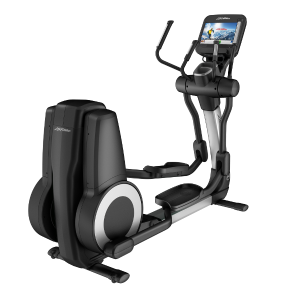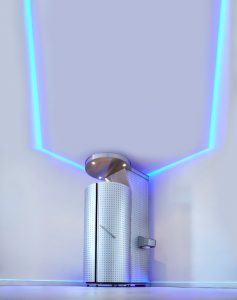Dumbbell Bacteria, Pokemon Go & More In This Issues News
Dumbbell Bacteria, Pokemon Go & More In This Issues News
Share
Dumbbell Bacteria
 Without trying to scare you from your next gym session, you need to know a few things about those dirty dumbbells you’ve been picking up. According to new research from FitRated.com, gym equipment is a lot more laden with germs than your average toilet seat. We know, it’s grim. Having gathered samples from equipment at three different fitness chains, researchers found that free weights, exercise bikes and treadmills all held more than one million bacteria cells per square inch; a toilet seat only carries 3,200 cells per square inch. Unfortunately, this means that the average dumbbell holds around 362 times for bacteria than a toilet seat. They’re not as germy as treadmills and bikes though, which ranked at a whopping 417 times more. How could this get worse? Turns out 70% of the germs found in the study were potentially harmful to humans. Looks like we might be staying at home to workout in future.
Without trying to scare you from your next gym session, you need to know a few things about those dirty dumbbells you’ve been picking up. According to new research from FitRated.com, gym equipment is a lot more laden with germs than your average toilet seat. We know, it’s grim. Having gathered samples from equipment at three different fitness chains, researchers found that free weights, exercise bikes and treadmills all held more than one million bacteria cells per square inch; a toilet seat only carries 3,200 cells per square inch. Unfortunately, this means that the average dumbbell holds around 362 times for bacteria than a toilet seat. They’re not as germy as treadmills and bikes though, which ranked at a whopping 417 times more. How could this get worse? Turns out 70% of the germs found in the study were potentially harmful to humans. Looks like we might be staying at home to workout in future.
Pokemon Go to tackle diabetes burden
 You’ve all heard of it and – admit it – have had a go at playing it. Pokemon Go is the new global craze, giving gaming fanatics a chance to catch, train and battle their favourite Pokemon monsters using virtual reality phone tech. Some are now suggesting that this new gaming phenomenon could be exactly what Brits need to tackle their increasing risk of type 2 diabetes. Recent figures have suggested that a staggering five million people in England alone are at high risk of developing such disease, which comes largely as a result of physical inactivity obesity. We’ve been spending less of our time moving around, increasing our chances of becoming diabetic. Cue Pokemon Go, which has been getting us up and out of the house, walking (and running) around in pursuit of Dragonites and Gyarados’. As a result, we’re doing more exercise and lowering the possibility of developing obesity-related problems. A win for gamers everywhere.
You’ve all heard of it and – admit it – have had a go at playing it. Pokemon Go is the new global craze, giving gaming fanatics a chance to catch, train and battle their favourite Pokemon monsters using virtual reality phone tech. Some are now suggesting that this new gaming phenomenon could be exactly what Brits need to tackle their increasing risk of type 2 diabetes. Recent figures have suggested that a staggering five million people in England alone are at high risk of developing such disease, which comes largely as a result of physical inactivity obesity. We’ve been spending less of our time moving around, increasing our chances of becoming diabetic. Cue Pokemon Go, which has been getting us up and out of the house, walking (and running) around in pursuit of Dragonites and Gyarados’. As a result, we’re doing more exercise and lowering the possibility of developing obesity-related problems. A win for gamers everywhere.
Increase the fat burned during exercise
If you’re thinking of trying out a ‘miracle’ fat burning diet or fitness routine, think again. A new study has tackled the claims made by these regimes by analysing how the consumption of an alkaloid called p-synephrine can effect how the body burns fat. Eighteen participants took part in a randomised, placebo-controlled, double-blind study in which half consumed the alkaloid and half took a placebo. The study found that although consuming the alkaloid – which can be found in citrus fruits – caused an increase of fat oxidisation during exercise, at best it would result in 42g of fat being burned off after an hour. So you could expect to lose up to 300g of fat per week, and up to 1kg a month. This challenges the results gained by the ‘miracle’ diets we hear so much of, as it suggests that the significant reduction in weight during these regimes comes as a result of fluid loss, not fat loss, and that fat oxidisation is key to real weight loss. Still, 1kg of fat per month sounds good to us.
The Power of Probiotics
Bacteria might get a bad rep, but what we mustn’t forget is that our bodies actually need the ‘good’ bacteria out there. Researchers from the Department of Cardiology at Taizhou People’s Hospital in China have spent some time looking at the benefits that probiotics – or ‘good bacteria’ – have to offer us in our quest to achieve a better bod. After combining the findings from 25 randomised human trials using 1,900 healthy adults, the results showed that taking probiotics helped to reduce both BMI and body weight. This meta-analysis – published in the International Journal of Food Sciences and Nutrition – also found that ingesting more than one type of probiotic over 8 weeks resulted in increased weight loss. While the actual amount of weight lost seemed minimal, the benefits to be had from these body-friendly bacterias remains significant, especially for overweight adults looking to escape chances of diabetes and high blood pressure. Time to add these to our list then.
Elliptical Running Fitness
 Running may be a great way to stay fit, but what happens when we get injured? One study may have found the answer, in none other than the humble elliptical. New research published in the Journal of Strength and Conditioning Research has found that, for a group of experienced runners, four weeks of eliptical-only training offered similar physiological and performance maintenance improvements in comparison to run-only training. This sits nicely alongside earlier research demonstrating that the oxygen consumption and energy expenditure of an elliptical session is comparable to that of a treadmill. This offers much needed hope for the dedicated endurance athletes out there who have sustained a running injury and need to maintain their fitness. For those of us just fed up of pounding the pavements, its great to know there’s an alternative thats a little more joint-friendly.
Running may be a great way to stay fit, but what happens when we get injured? One study may have found the answer, in none other than the humble elliptical. New research published in the Journal of Strength and Conditioning Research has found that, for a group of experienced runners, four weeks of eliptical-only training offered similar physiological and performance maintenance improvements in comparison to run-only training. This sits nicely alongside earlier research demonstrating that the oxygen consumption and energy expenditure of an elliptical session is comparable to that of a treadmill. This offers much needed hope for the dedicated endurance athletes out there who have sustained a running injury and need to maintain their fitness. For those of us just fed up of pounding the pavements, its great to know there’s an alternative thats a little more joint-friendly.
Alternative Fitness Equipment
If you’re getting bored with your gym routine, fear not; there’s whole host of alternative fitness equipment to be tried. One of these includes the MOTR – a foam tube with metal and elastic attachments, that when stood on helps to stimulate lymphatic drainage and tension release through the body. Then you have Gliders, the fabric circles placed under hands and feet to engage your core muscles as you move across the room. The Pilates Mve Chair is another odd one, resembling a stool with a metal bar attached on which you lunge, pike, handstand and tricep dip for a total body challenge. If you’re especially bored with the treadmills, try the Woodway Curve variety. These run according to your own pace, and are curved and cushioned to prevent pressure on the joints. Lastly, we have the Cardio Wall which is aimed at testing reactions while offering all the benefits of cardio. Throw on boxing gloves and aim for the flashing lights.
Cryosauna
 If sweating in a box or freezing in an ice bath doesn’t make the cut, there’s a combination of the two that might just take your fancy. The Cryosauna cooling chamber currently residing in an Australian fitness centre uses liquid nitrogen to expose your body to temperatures of around minus 140 degrees Celcius. The owner of CryoFitness in New South Wales, Australia suggests that 240 litres of liquid nitrogen can last across 20-30 Cryotherapy sessions. Why would you do such a thing? You can burn up to 800 calories in just 3 minutes, as your body goes into survival mode, pushing blood to the core to protect your vital organs. Sounds a little drastic maybe, but Cryotherapy has been around since the 1970’s, when the Japanese started using it to tackle rheumatoid arthritis. There’s also talk that ice therapy such as this is good for anti-ageing, cell rejuvenation, anti-inflammatory muscle repair and muscle soreness. We still can’t decide if its worth it.
If sweating in a box or freezing in an ice bath doesn’t make the cut, there’s a combination of the two that might just take your fancy. The Cryosauna cooling chamber currently residing in an Australian fitness centre uses liquid nitrogen to expose your body to temperatures of around minus 140 degrees Celcius. The owner of CryoFitness in New South Wales, Australia suggests that 240 litres of liquid nitrogen can last across 20-30 Cryotherapy sessions. Why would you do such a thing? You can burn up to 800 calories in just 3 minutes, as your body goes into survival mode, pushing blood to the core to protect your vital organs. Sounds a little drastic maybe, but Cryotherapy has been around since the 1970’s, when the Japanese started using it to tackle rheumatoid arthritis. There’s also talk that ice therapy such as this is good for anti-ageing, cell rejuvenation, anti-inflammatory muscle repair and muscle soreness. We still can’t decide if its worth it.
Fitness Age Calculator
Putting in the hours at the gym and still feeling like your past it? If you’re a regular fitness junkie looking for a little extra motivation, try out a new device that can calculate your age in fitness years – you may be younger than you think. Developed in 2013 by researchers at the Norwegian University of Science and Technology, the ‘Fitness Age Calculator’ takes info on where you live, your age, gender, heart rate, heigh, waist measurements and how frequently you exercise, to determine how old you are based on your physical fitness. The calculator was tested last year on athletes aged 50 and over, and while their average age was 68, their fitness age came in at just 43. Not only can this demonstrate the importance of good health and exercise, it can also make us 30-somethings feel a lot more 20-something in fitness years. We’re in.













FOLLOW BESTFIT